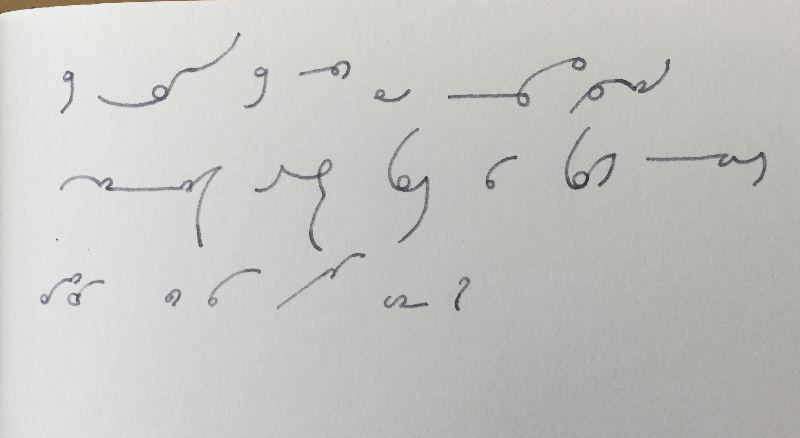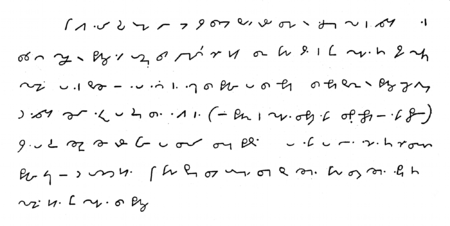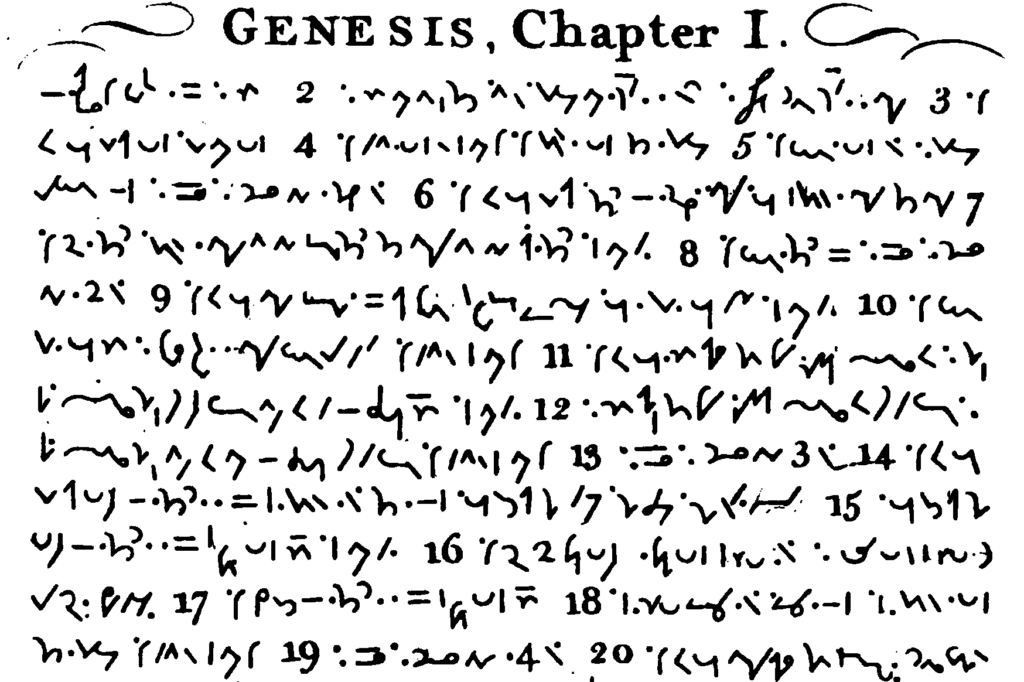
Taking notes quickly and accurately can be a challenge for college students, especially when it comes to keeping up with lectures and seminars. At the same time, no one will doubt that taking notes is a crucial part of learning and understanding course material. This process can be difficult and time-consuming, but with the right techniques, it’s possible to take fast notes with shorthand writing. In this blog post, we’ll explore how students can use shorthand writing techniques to take fast and efficient notes in the classroom.
What is Shorthand Writing?
Before we dive into shorthand methods, let’s get our bearing in the concept itself. Shorthand writing is a system of quick writing that involves using symbols and abbreviations instead of full words or phrases in order to reduce the amount of time needed to write down specific information. There is another word that is used for shorthand writing. Sometimes you can come across such a phenomenon as stenography, which basically means the same thing.
As for today, shorthand may be encountered in law courts, in medical fields, and in the military; it is actively used by many professionals such as journalists and interpreters; it is widely spread at colleges and universities as well.
There are many ways to learn how to take fast handwritten notes. We are going to check out some of them so as to choose the one that works best for you.
Use Shorthand Writing System
In fact, there exist many shorthand systems out there. But let’s get acquainted with the most common and effective ones.
Teeline
The Teeline shorthand method is a unique and highly effective way to take notes and record information quickly while being absolutely legible. It is an indispensable tool for students, journalists, secretaries, and anyone who needs to capture essential details swiftly. It’s a system created by James Hill in 1968, and it’s designed to help speed up the process of writing down information. Besides, this method is basically taught in journalism in many countries, especially in the UK. So, if you’re considering a career as a journalist, you should definitely mull over learning this system to get your foot in the door confidently.
 “Choose teeline! Since you’re from the UK, most journalists there still learn teeline. So books would be readily available for you.”
“Choose teeline! Since you’re from the UK, most journalists there still learn teeline. So books would be readily available for you.”
– Redditor NotADreamAfterAll1
Unlike other shorthand systems, Teeline is based on the English alphabet, using the basic outline of each letter to form the basis of the shorthand. Each letter is then modified with the help of curves and strokes to facilitate reading. This makes it easier to write quickly without having to pause to remember each word’s spelling.
 “You could also look into Teeline. […] it’s not hard compared to some other shorthands. There are tons of resources and it’s the most popular system in the UK.”
“You could also look into Teeline. […] it’s not hard compared to some other shorthands. There are tons of resources and it’s the most popular system in the UK.”
– Redditor VisuelleData
The beauty of Teeline shorthand is that it’s very simple and doesn’t require any special training. It’s an excellent way for beginners to get started with shorthand, and it’s also ideal for those already familiar with the system.
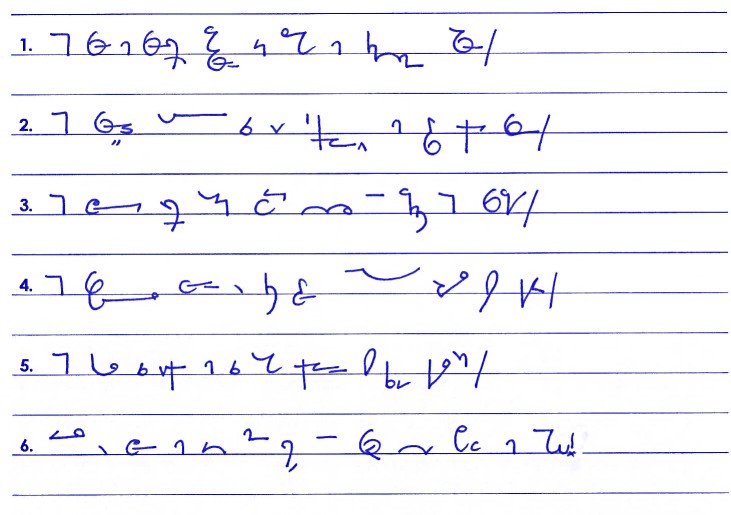
Gregg
Gregg shorthand is an American phonographic system created by John Robert Gregg in 1888. The main feature of Gregg shorthand is that it is based on phonetic symbols rather than traditional written symbols. It is the pronunciation that matters, not spelling. This allows for greater speed when writing, as well as greater accuracy, as it eliminates the need to be able to spell out words accurately. The symbols used by this method for words are circles and hooks.
 “If you want a symbol system, there are a few that you can learn relatively quickly. Gregg Notehand is the easiest of the Gregg systems, and if you apply yourself, you could learn it in a couple weeks. You could always later on if you have the interest go on to a harder but faster version of Gregg as well. […] Personally I’d go for Notehand because it’s more fleshed out and there’s more materials available […].”
“If you want a symbol system, there are a few that you can learn relatively quickly. Gregg Notehand is the easiest of the Gregg systems, and if you apply yourself, you could learn it in a couple weeks. You could always later on if you have the interest go on to a harder but faster version of Gregg as well. […] Personally I’d go for Notehand because it’s more fleshed out and there’s more materials available […].”
– Redditor Filaletheia
In addition, Gregg shorthand is an incredibly efficient system. It has the potential to help you reach speeds of up to 200 words per minute. This makes it an ideal system for those who want to jot down the text quickly and accurately.
Finally, Gregg shorthand is very easy to learn. While it may take some time and practice to become proficient in it, many people find that it is relatively easy to learn. The system also includes tips on how to take notes, which can be very helpful for those who are just starting out. There are lots of great resources available to help you learn Gregg shorthand. You can find books, classes, and even software programs to help you master the system.
 “The learning resources I found most helpful wereThe Gregg Shorthand Manual Simplified, for learning most rules; The Gregg Shorthand Dictionary Simplified, to answer “what’s the best way to write this?” questions since I had no teacher (this was surprisingly useful to me). An easy-to-search listing of brief forms, like the one here: http://gregg.angelfishy.net/anbfs.shtml.”
“The learning resources I found most helpful wereThe Gregg Shorthand Manual Simplified, for learning most rules; The Gregg Shorthand Dictionary Simplified, to answer “what’s the best way to write this?” questions since I had no teacher (this was surprisingly useful to me). An easy-to-search listing of brief forms, like the one here: http://gregg.angelfishy.net/anbfs.shtml.”
– Redditor G-Mang
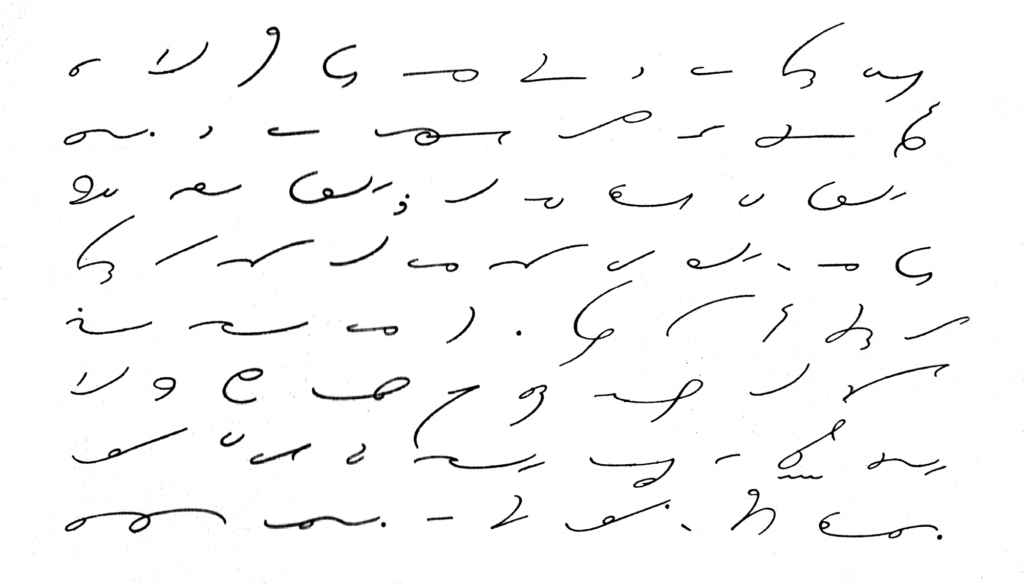
Noory Simplex
If you’re tired of writing so quickly that your handwriting becomes illegible, the Noory Simplex Shorthand System may be the perfect option for you. This system was created by the renowned shorthand teacher and author, Mrs. Noory Simplex, who has been helping students learn the art of shorthand for over 40 years. In fact, some people are able to write up to 100 words per minute with the Noory Simplex!
 “I’d recommend Noory Simplex if you want an easy non-alphabetic system. It’s pretty easy to learn, I’ve been learning it for awhile at with studying under an hour per week for 2 or 3 months and I can write it at about the same speed as I can with longhand.”
“I’d recommend Noory Simplex if you want an easy non-alphabetic system. It’s pretty easy to learn, I’ve been learning it for awhile at with studying under an hour per week for 2 or 3 months and I can write it at about the same speed as I can with longhand.”
– Redditor VisuelleData
The system is made up of two sets of symbols. The first set is the phonetic alphabet, which includes symbols for the specific sounds in English. The second set is the shorthand symbols, which are symbols that represent words or phrases. The Noory is designed to be easy to learn, and its symbols are easy to remember. What distinguishes this system is that you can use it with any language, so you can learn how to use the system with the language you are most comfortable with.
Taylor
Taylor can be a decent alternative to traditional note-taking methods as well. This system of geometric shorthand was created in Britain by Samuel Taylor in 1786. Curious enough, it is the first shorthand system to be used across the English-speaking world. Taylor shorthand employs an alphabet with 19 letters of simplified form, so you need just a little bit of effort and time to become skilled at it.
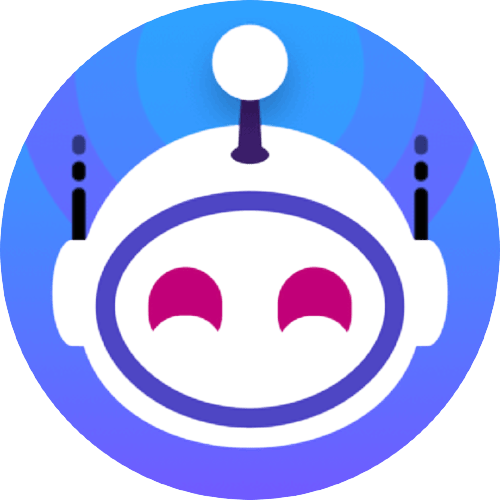 “Taylor is an especially simple and elegant system, though it sacrifices legibility by removing all the vowels.”
“Taylor is an especially simple and elegant system, though it sacrifices legibility by removing all the vowels.”
– Redditor ExquisiteKeiran
With this system, a student can write down a full lecture in around 2 minutes, whereas it would normally take around 15 minutes to write everything down in longhand. Sounds awesome, doesn’t it?
Gurney
Gurney Shorthand System is an efficient method of taking written notes that has been used for centuries. It was published in 1750 by Thomas Gurney. Can you imagine that his shorthand system was learned by such great people as Charles Dickens and Erasmus Darwin? How amazing is that!
 “Gurney is likewise very simple (albeit somewhat less elegant), and it has the added benefit of adding in-line vowels at one’s own discretion.”
“Gurney is likewise very simple (albeit somewhat less elegant), and it has the added benefit of adding in-line vowels at one’s own discretion.”
– Redditor ExquisiteKeiran
Some people find Gurney comparatively simple, but for some people, it appears to be incredibly difficult to learn, let alone memorize. But everything is possible when you are driven by the goal and put your effort into it. Another interesting fact about this system is that once, The House of Commons called Thomas Gurney to read aloud what he had written in shorthand (and, obviously, he nailed it), thus recognising the authenticity of stenography for the first time.
Orthic
One more shorthand system we’re going to learn about is Orthic Shorthand System. It is an easy-to-learn tool that can help you take notes faster and prevent you from missing any crucial details.
 “The last time a thread like this came up, someone made a very strong case for Orthic. It’s a pretty great system and has a lot of resources on r/Orthic. Things are written the way they’re spelled. More complex than Noory Simplex.”
“The last time a thread like this came up, someone made a very strong case for Orthic. It’s a pretty great system and has a lot of resources on r/Orthic. Things are written the way they’re spelled. More complex than Noory Simplex.”
– Redditor VisuelleData
This system is a great way to boost your writing speed. Replacing the standard English alphabet with its optimized version will enable you to write 2–3x faster. This one alteration can lead to a writing speed of 60–90 words per minute!
 “My shorthand speed (Orthic) is currently around 60 WPM, twice as fast. And I expect to be around 90 WPM in a couple of months.”
“My shorthand speed (Orthic) is currently around 60 WPM, twice as fast. And I expect to be around 90 WPM in a couple of months.”
– Redditor jacmoe
So if you want to keep your handwriting quick, compact, and still readable, Orthic is certainly worth trying.
 “Taylor and Gurney are very old systems first devised in the mid-1700s. For something more modern (and probably more accessible), Orthic is a popular choice on this subreddit as something that is easy to learn and very customisable. A website was recently made to teach the system, since the original manual is, frankly, not very good.”
“Taylor and Gurney are very old systems first devised in the mid-1700s. For something more modern (and probably more accessible), Orthic is a popular choice on this subreddit as something that is easy to learn and very customisable. A website was recently made to teach the system, since the original manual is, frankly, not very good.”
– RedditorExquisiteKeiran
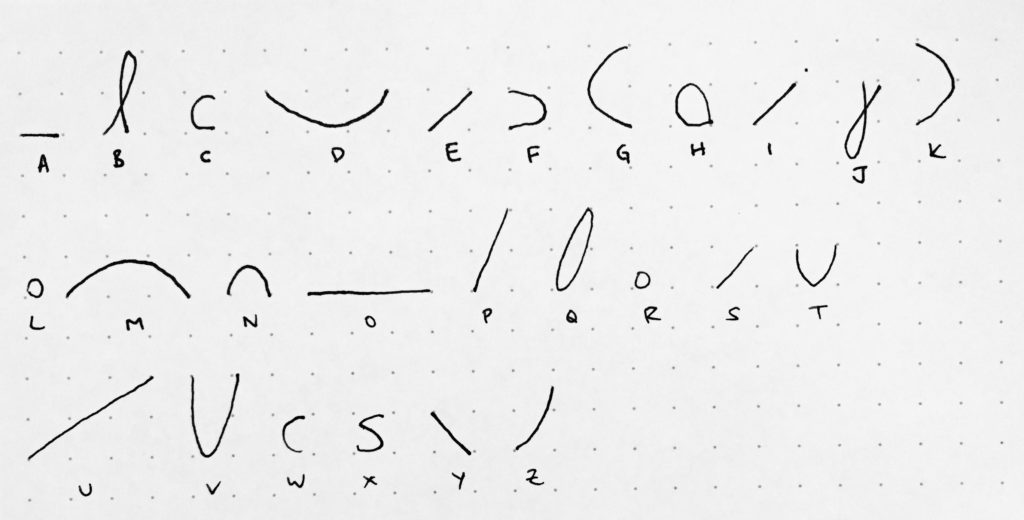
Spencerian script
Spencerian Script is a script style developed by Platt Rogers Spencer in the mid-19th century. From around 1850 to 1925, the use of this writing style was widespread in the U.S., and it was largely accepted as the go-to style for business correspondence. President James A. Garfield declared Spencerian script, an American form of cursive handwriting, to be “the pride of our country and the model of our schools.” This style was also widely taught in educational institutions, which confirms its effectiveness and proven student use. So if you are willing to take your note-taking skills to the next level, keep your handwriting pleasant and neat to the eye, and impress your teachers and groupmates with your writing speed, Spencer may be just impeccable for you.
 “I taught myself Spencerian script (American cursive from the 1870’s), and I can write at about 30 WPM in longhand (cursive).”
“I taught myself Spencerian script (American cursive from the 1870’s), and I can write at about 30 WPM in longhand (cursive).”
– Redditor jacmoe
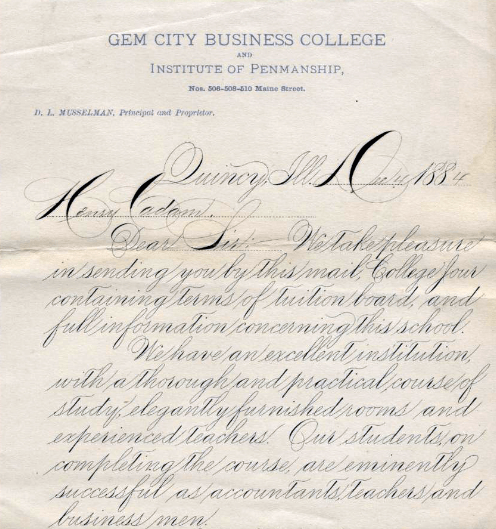
Alphabetic shorthands
Alphabetic shorthands can save you a lot of time and make it much easier to take notes and quickly respond to emails and other written communication. They are also great for taking quick notes in the margins of your textbooks or jotting down ideas during a brainstorming session.
There are many different alphabetic shorthands out there, such as Easyscript, Quickhand, Speedwriting, Briefhand, and each one has different rules for how you create the abbreviations.
 “Alphabetic shorthands are generally the easiest to learn, for these the most popular systems (here) are Forkner and Speedwriting. Both of which have a lot of resources linked to on the wiki/sidebar.”
“Alphabetic shorthands are generally the easiest to learn, for these the most popular systems (here) are Forkner and Speedwriting. Both of which have a lot of resources linked to on the wiki/sidebar.”
– Redditor VisuelleData
Now, let’s take a look at some examples of several alphabetic shorthands to understand how this works:
- Amsco (abbreviated mnemonic system of communication) uses the first letter of each word in a phrase to create an abbreviation. For example, the phrase “Take notes” would become TN.
- Pitman is a more complex system of abbreviations. It typically uses the first letter of each word, as well as additional letters, to create an abbreviation. For example, “Take notes” would become TNs.
Using alphabetic shorthands can be a great way to take better notes and remember more of your lectures. It may take some practice to learn the different systems, but it’s well worth the effort.
Create Your Own Shorthand System
And now, when we’ve gone through the most common and hands-on shorthand systems, you may feel a little bit perplexed by which one to choose. All of them require a great deal of effort and patience, but it may happen that none of them captures your interest. And that’s okay. Anyways, you will not have to write down every single word your professor says because it’s tedious and time-consuming. In this case, the solution is simple—create your own customized shorthand system that will reflect your own preferences and writing style!
How to do it?
The first step is to identify the most commonly used words in the notes you will be taking. This can be done by reading and analyzing your notes from previous lectures or speeches. Once you have identified the most commonly used words, you can start to create your own shorthand system.
The simplest way to do this is to create a set of symbols or abbreviations for the words by using a combination of letters, numbers, and symbols that are easy to remember. For example, you might assign the symbol “&” for “and” or use the number “4” to represent the phrase “for example.”
Don’t forget that it’s important to keep your shorthand consistent, so make sure to use the same symbols and abbreviations throughout your notes.
Creating your own shorthand system can be a great way to increase your note-taking speed and accuracy, as well as unleash your imagination and channel it in a creative way. So, why not give it a try and let your own unique shorthand system enhance your studies?
 “The best shorthand is the one you’re still using a year later.”
“The best shorthand is the one you’re still using a year later.”
– Redditor sonofherobrine
Improve Your Shorthand
Use a comfortable pen
If you want to become a master of shorthand writing, the best pen for college is a must-have item. It is important the pen is comfortable to hold and write with. It should also have a smooth tip that glides easily on the paper with good ink flow.
With the right pen, you can write faster and more accurately while making sure your handwriting still looks neat, legible, and professional. An ink pen or a sharp pencil is recommended. To avoid messiness, be certain that the ink does not smudge or run when you are writing, and don’t use pencils with dull points.
 “Have a good pen. The G2 is a popular one. Skim through the readings/presentation first to get an idea of what the main points are. This will keep you from writing broad statements that are not that important after you read the passage.”
“Have a good pen. The G2 is a popular one. Skim through the readings/presentation first to get an idea of what the main points are. This will keep you from writing broad statements that are not that important after you read the passage.”
– Redditor local_man_says
Practice Your Shorthand Regularly
Shorthand is a great tool for students to have, as it allows them to jot down ideas and concepts during lectures or class discussions in a concise way. The only way to become proficient in shorthand and remain confident in its use is to practice it regularly. No wonder, they say that practice makes perfect.
 “Learning the rules is only half the work. Practicing them so you can write at useful speed takes time. 30 hours before you write shorthand faster than longhand is typical, longer if you don’t push yourself or get bad habits.”
“Learning the rules is only half the work. Practicing them so you can write at useful speed takes time. 30 hours before you write shorthand faster than longhand is typical, longer if you don’t push yourself or get bad habits.”
– Redditor CrBr
Here are some tips to help you get started. Begin by memorizing the most commonly used symbols. Start with the alphabet, numbers, and the most common punctuation marks. Another great thing you can do is to set aside a certain amount of time each day to practice your shorthand. Try to make it a routine so you don’t forget to practice. Or even better, you can combine business with pleasure—practice your shorthand right in the classroom. Use shorthand to capture key points and be able to review them quickly during breaks and afterwards. This will help you to remember the material better, and also to get used to reading your own shorthand.
 “Have a goal when taking notes. Do you want to jot down thoughts while reading, create a study guide, think through complicated topics, raise questions, etc. If you try to do everything then notes will take a while. For each time you read you should try to stick to one or two goals. Another technique is to only take notes after every 20 minutes of reading ( or every 5 pages, or whatever works). This reduces back and forth switching and is an effective way to increase retention.”
“Have a goal when taking notes. Do you want to jot down thoughts while reading, create a study guide, think through complicated topics, raise questions, etc. If you try to do everything then notes will take a while. For each time you read you should try to stick to one or two goals. Another technique is to only take notes after every 20 minutes of reading ( or every 5 pages, or whatever works). This reduces back and forth switching and is an effective way to increase retention.”
– Redditor local_man_says
By following these tips and consistently practicing, it’ll be a piece of cake to master any shorthand system you opt for. So don’t hesitate: start practicing your shorthand today, and you’ll be able to take notes quickly in no time!
Conclusion
Taking fast notes with shorthand writing can be a useful tool for college students to help them take more efficient notes during lectures and capture key information. With practice and dedication, students can learn how to take notes from a textbook or lecture swiftly and confidently with shorthand writing. This skill can make a significant difference in their academic performance and help them become more organized and effective learners. So, give shorthand writing a try, and you may be surprised by how much time and effort you can save!


